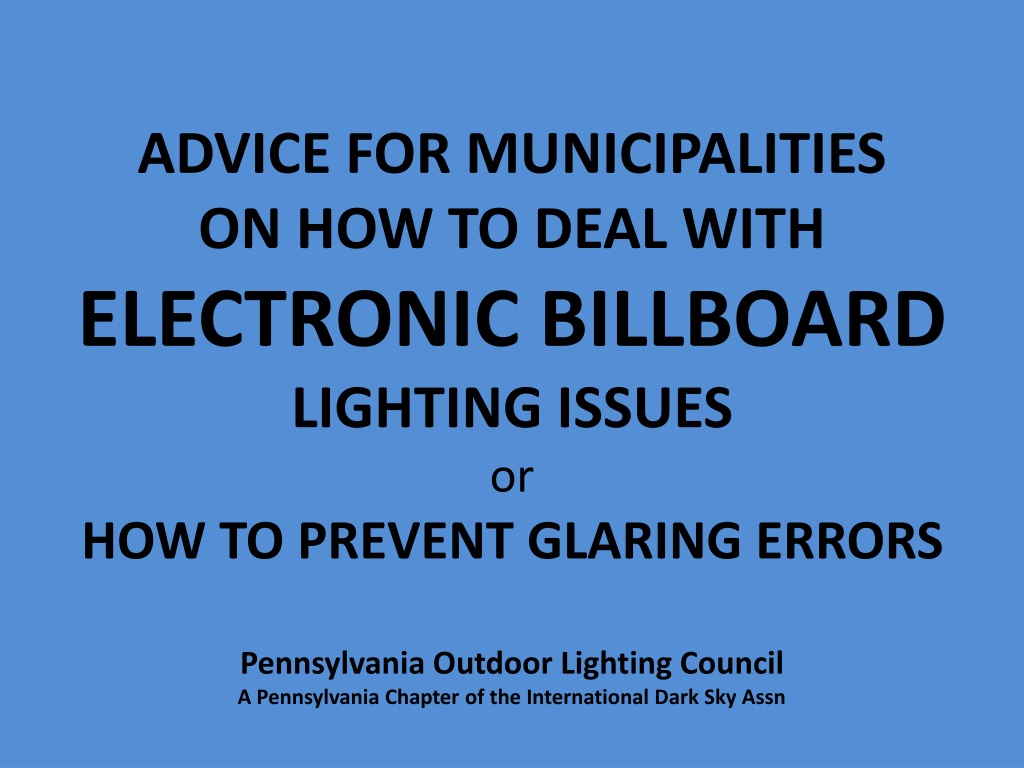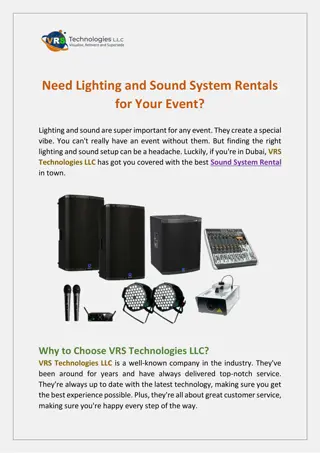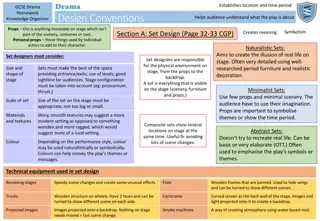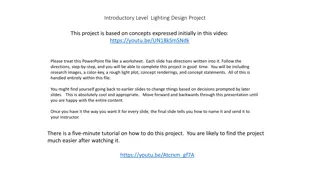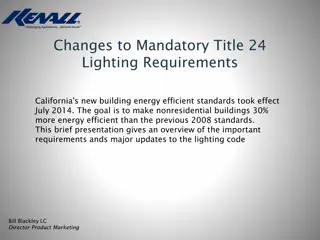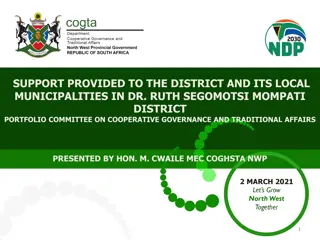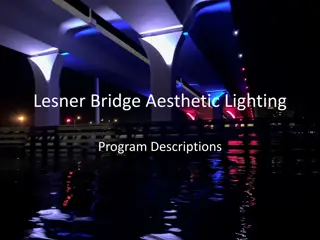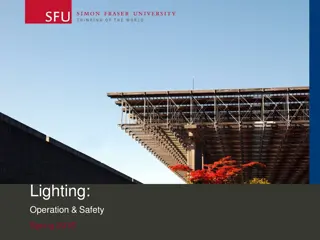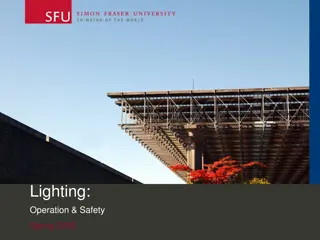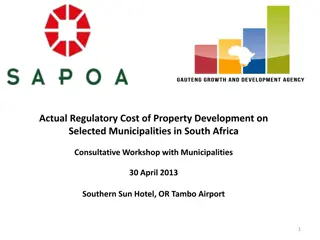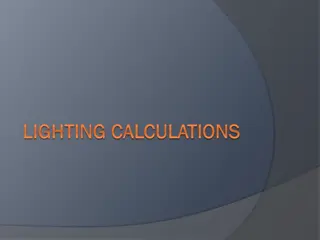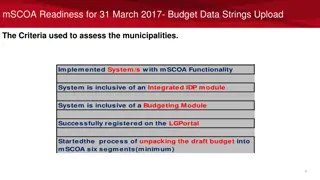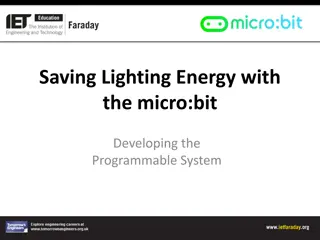Dealing with Electronic Billboard Lighting Issues in Municipalities
Explore advice for municipalities in Pennsylvania on managing electronic billboard lighting challenges provided by the Pennsylvania Outdoor Lighting Council, a local chapter of the International Dark Sky Association. Learn effective strategies to prevent glaring errors and ensure proper lighting regulations are in place.
Download Presentation

Please find below an Image/Link to download the presentation.
The content on the website is provided AS IS for your information and personal use only. It may not be sold, licensed, or shared on other websites without obtaining consent from the author. Download presentation by click this link. If you encounter any issues during the download, it is possible that the publisher has removed the file from their server.
E N D
Presentation Transcript
ADVICE FOR MUNICIPALITIES ON HOW TO DEAL WITH ELECTRONIC BILLBOARD LIGHTING ISSUES or HOW TO PREVENT GLARING ERRORS Pennsylvania Outdoor Lighting Council A Pennsylvania Chapter of the International Dark Sky Assn
WHAT HAS CHANGED? Traditional billboards use external light sources, aimed up or down toward the sign face. BOTTOM LIT BILLBOARD
WHAT HAS CHANGED? LED billboards are back-lighted with the LEDs aimed out and down toward the viewer. BACK LIT LED BILLBOARD
THE GOOD LEDs have less power consumption Brightness adjustable to accommodate changing ambient light levels and after hours dimming . Have much longer light source life Put less light into the sky Contain no mercury or lead
THE BAD Typically excessively bright/glary Moving message may promote driver distraction Driver vision may be hampered after passing from bright sign into dark area Light trespass into homes Potential residential property devaluation
THE UGLY Incessant on/off flashing in the night sky as message changes, causes annoyance, big time. Flashing in bedroom window can disrupt sleep and impact health. Negative impact on habitat of flora and fauna and bird navigation
LIGHTING IMPACT LOCATION DEPENDENT In commercial/industrial district with high ambient light level, potential billboard brightness impact may be minimal and require minimal regulation. In or near residential district or within an area with low ambient lighting, billboard brightness impact can be intolerable and require strict regulation.
MINIMIZING THE UGLY Control where billboards are permitted In which zoning districts On limited access roads, not at or near intersections, exit or entrance ramps or merging lanes Not where board face or flashing light visible from a residential use Control minimum spacing between sign locations
MINIMIZING THE UGLY contd. Control minimum duration of message Sign industry advocates 8 seconds Recommend 30 60 seconds depending upon location of board with respect to traffic speed Control message change transition time Should be instant no fade, blur or slide off. Require message to freeze in off mode in event of board malfunction.
MINIMIZING THE UGLY If in area sensitive to ambient light: Control maximum dimensions of board lighted area Control maximum day and night brightness Control time and degree of dimming Control if and when sign must be shut off nightly at close of business or in residential zone.
MINIMIZING THE UGLY contd. Hold applicant responsible for demonstrating conformance with approved brightness values Hold applicant responsible for post-installation brightness adjustment, if determined to be necessary.
MEASURING SIGN BRIGHTNESS What metric should be used in ordinance to measure and control sign-face brightness? Should ordinance use footcandles (illuminance)? Should ordinance use cd/m [nits] (luminance) ? Illuminance (Footcandle) Meter Luminance 1 Degree Spot Meter
MEASURING SIGN BRIGHTNESS Footcandles measure light received by the eye not only from sign face but also from surrounding light sources whose rays reach viewer s eyes. Difficult to isolate just sign contribution. Footcandles vary inversely with the square of the distance from the sign to the viewer
MEASURING SIGN BRIGHTNESS Nits (cd/m ) measure brightness on sign face Minimally influenced by surrounding light sources Distance from sign face not critical. Luminance does not vary with distance, only apparent size of source varies. Luminance, rather than illuminance, is the better metric choice.
BRIGHTNESS LEVEL When is enough too much? Acceptable brightness level is very much location dependent. For ordinance, a good starting number would be 5000 nits during daylight hours 200 nits during hours of darkness For application evaluation, thorough consideration of ambient conditions imperative, with appropriate brightness maximums imposed.
BRIGHTNESS VERIFICATION Sign owner can promise but will it be delivered? Sign owner can, with the press of a button, ratchet up sign brightness levels after installation. How to verify applicant s brightness commitment? Brightness is in the eye of the beholder. One person s brightness is another s disabling glare Will code officer s subjective evaluation of sign brightness be acceptable? Looks OK to me!
BRIGHTNESS VERIFICATION Should municipality purchase a meter? Can municipality justify meter expenditure? Footcandle meters cost from $100 - $1000. Luminance meters cost $3000+. Meter NIST recalibration costs $500 Large investment for occasional use
BRIGHTNESS VERIFICATION Suggested Solutions As part of application approval, hold applicant responsible for: demonstrating brightness commitment compliance subsequent further reduction of sign brightness if so required. inviting municipality to witness taking of installed sign brightness readings, with documentation that meter is NIST certified.
BRIGHTNESS VERIFICATION Alternatively, require that applicant provide municipality with an NIST certified luminance meter and to pay for subsequent annual recalibration.
CONCLUSIONS If board is to be on a State road, don t rely on the State to protect your interests Just because they approved a sign, doesn t mean it will satisfy your municipality s needs. When it comes to electronic signs, it s all about location. Remember your obligation to protect the health, safety and welfare of your citizens. Irresponsible signage can directly impact all 3
CONCLUSIONS Enact an effective sign ordinance NOW! When an application arrives it s too late The sign folks have a reputation for having it their way and they re pros at it. Their motto: We win, you lose. During application review process, don t leave anything to chance, don t assume promises will become reality. Put it in writing
Visit the Pennsylvania Outdoor Lighting Council website to obtain model ordinance language for electronic-sign lighting. www.polcouncil.org
